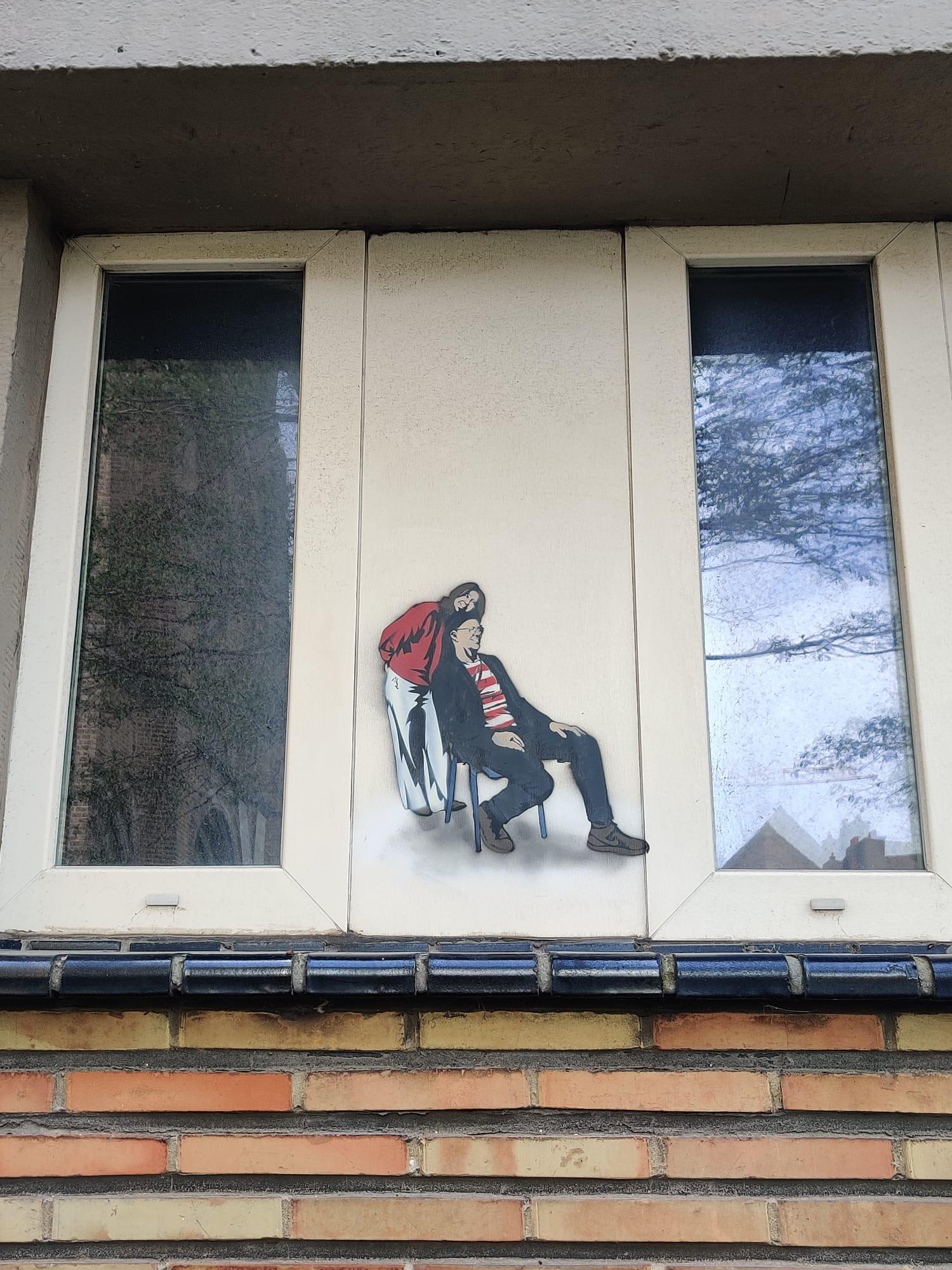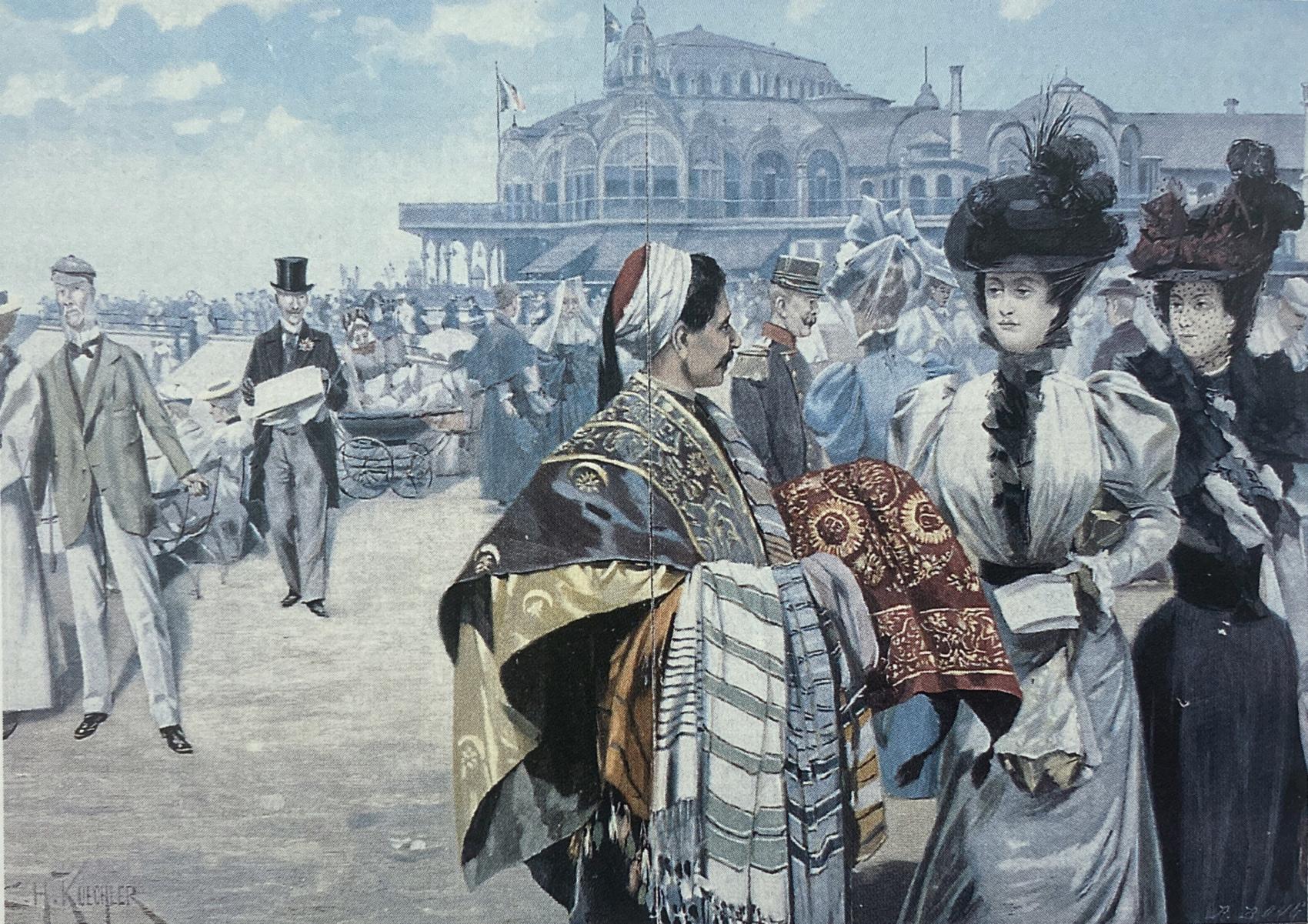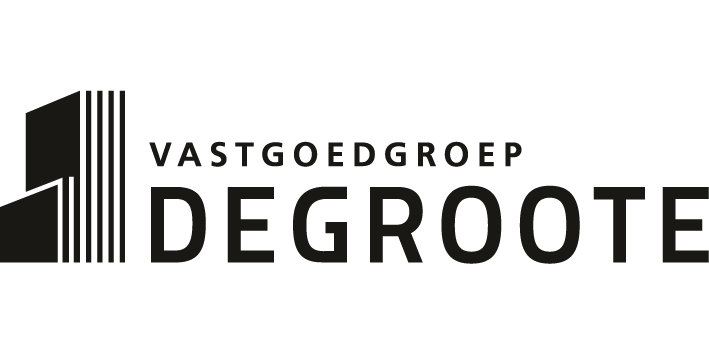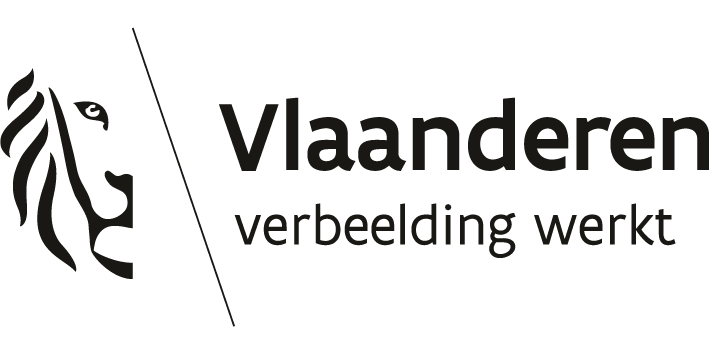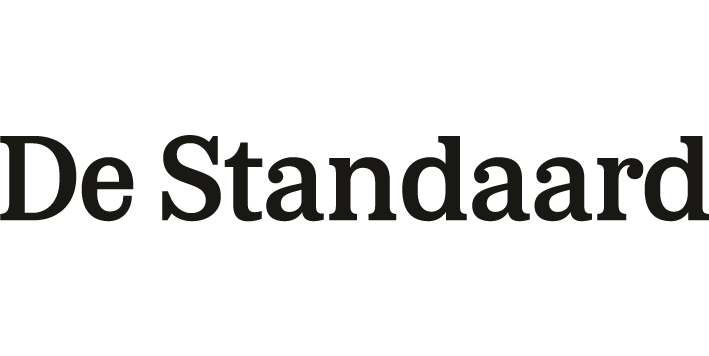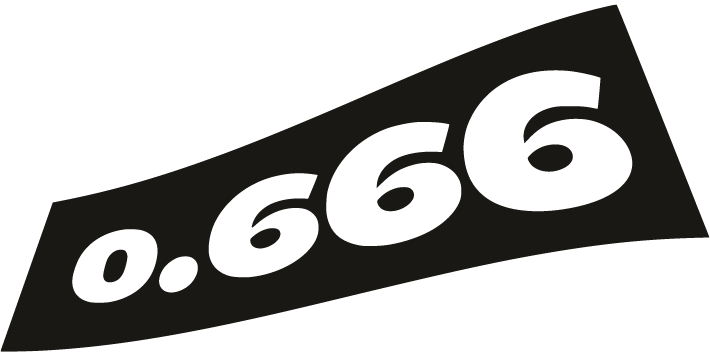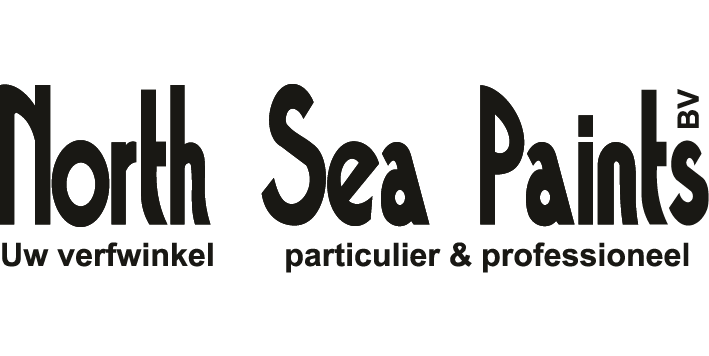Jeroen, resident:
In 1890, Ostend was not the diverse city it is today. All the bathers and the strollers on the dyke were white. Whiter than white. Indeed, pale skin was a sign of wealth in those days. Anyone with tanned skin had to be a farmer or a fisherman who worked outdoors. Wealthy bathers had to protect their limited bits of exposed skin from the sun’s rays with hats and parasols - as sunscreen was not invented until 1930.
Yet Ensor’s painting does include a few people of colour. Perhaps the couple on the far left come from a modest background? In any case, the man seems bronzed. But maybe not. He is wearing a hat with a black ribbon, and that was not the custom for a lowly man back then.
The two men to the right definitely have dark skin. They are also wearing non-Western headgear. Huh? It couldn’t be, in the Ostend of old, could it? Even so. Perhaps they were carpet dealers from the Middle East. At the time, colourful oriental fabrics were the height of fashion among the bourgeoisie, and they were sold on the dyke near the Kursaal. Moreover, we know from the newspaper L’Echo d’Ostende that two Egyptian princes were visiting in the summer of 1890. So the second possibility is that Ensor included them with the rest of the chic public.
